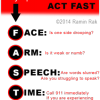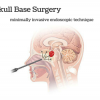Hello again, my name is Ramin Rak and I am writing this post to share information about another complex spinal procedure that I perform at Neurological Surgery, P.C.: Kyphoplasty Surgery.
I am one of six Neurological Surgery, P.C. neurosurgeons who performs kyphoplasty surgery. The others are:
- Dr. Stephen D. Burstein
- Dr. William J. Sonstein
- Dr. Benjamin R. Cohen
- Dr. Artem Y. Vaynman
- Donald S. Krieff, D.O., F.A.C.O.S.
I perform kyphoplasty surgery in order to reverse spinal compression caused by a spinal bone fracture.
Individuals who experience compression lose vertebral body height and experience intractable pain. Fortunately kyphoplasty surgery removes pain relief roughly 48 hours after completion of the procedure, and patients can leave the hospital on the same day the procedure is completed.
Once the patient has been sedated, I make a small incision in the patient’s back so that I can insert a narrow tube-like needle into the fractured vertebral body.
I then use an imaging technique called fluoroscopy, which uses x-rays to provide a real-time moving image of the patient’s spinal structure, to guide the needle into the fractured area. Once a path has been made to the spot of the fracture, I insert a balloon into the tube, guide it to the vertebrae, and then slowly inflate it. The inflated balloon elevates the spinal structure, which restores vertebral body height. Next I remove the balloon and fill the cavity created by the balloon with a cement-like material that hardens quickly and stabilizes the spinal structure.
The entire procedure takes roughly one hour per affected vertebra and following conclusion of the procedure, the patient is observed in the recovery room until my doctors determine that he or she can leave.
This is how I complete kyphoplasty surgery at Neurological Surgery, P.C.
Learn more about how I complete this procedure by reaching out to me on Doctor’s Hangout.
Thanks for reading,
Ramin Rak

During kyphoplasty surgery, a balloon is inserted into the spine and inflated via a small tube.



